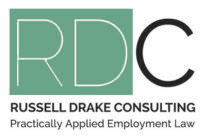
A recent survey by the Employers and Manufacturers Association (EMA) confirmed what many of us already know – employers are struggling to fill vacancies and many applicants lack the necessary skills to do the job.
The survey covered 335 businesses across 50 different sectors and industries, confirming that there is a serious shortage of workers available to fill vacancies, that the cost of new hires is increasing, and that staff poaching is on the rise.
53% of respondents indicated that the gap in basic skills between what available candidates could offer and what the role required, was a major issue and that many applicants did not have the right attitude, reliability, or relevant experience.
While the new Accredited Employer Work Visa (AEWV) process is aimed at bringing higher skilled workers into New Zealand – 35% of survey respondents said that they would still not be able to fill their vacancies due to the new median wage threshold, without being granted an exemption.
With critical staff shortages likely to continue for some time, and employee ‘poaching’ on the rise, it is now more critical than ever that you do all that you can to retain your existing staff.
While seeking an increase in remuneration is often a core reason for an employee to change jobs, this is not the only tool available to the employer who wishes to retain their staff.
Key considerations in retaining good staff include:
- Is the existing wage rate or salary competitive in the current market? – ensuring that you have robust data on a regular basis to benchmark your remuneration rates against is critical. Don’t wait for your employee to come to you, review regularly.
- Do you have a remuneration strategy in place in your business that provides a ‘remuneration range’ for each role type – setting minimum, average and maximum rates of pay for the role in order that staff can be benchmarked against this based on their skills, knowledge, experience, and qualifications.
- Do your staff have Personal Development Plans that identify what they want to achieve in their role/career and how the company is committed to helping them achieve this?
- Do you know what the ‘culture’ is within your business, and more specifically the reasons why people choose to work for you (cultural strengths) and what aspects of your business cause people to want to look elsewhere (cultural deficiencies) – this could include employee perceptions of management effectiveness, competence, communication and how well staff feel valued in their work.
- Do you have good policies, procedures and processes in place within the business to enable staff to undertake their roles in an efficient and satisfying manner – previous survey data has confirmed that ‘role ambiguity’ (unclear expectations, processes and instructions) is a significant contributor to worker dissatisfaction.
- As a business, what ‘non-monetary’ benefits do you provide to staff and how can providing a sense of ‘recognition and value’ contribute to the worker’s level of engagement and commitment to the company.
Businesses who intend to ‘fight the retention battle’ on wage rates alone may still end up losing good staff as work often means more to an individual’s wellbeing than simply what they might end up with in their pockets at the end of each week.
If you are serious about wanting to retain your valued employees, the starting place could be implementing an employee survey and putting in place a good retention strategy (covering the points listed above).
If you would like to discuss how you can begin this journey, please feel free to contact us directly regarding the tools and resources we have available.
For more of what we do please go to www.russelldrakeconsulting.co.nz
